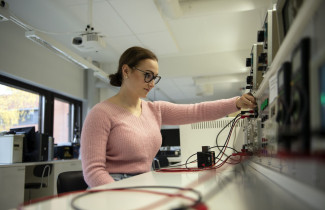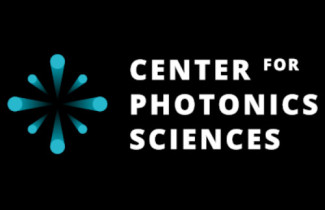The doctoral dissertation in the field of Physics will be examined at the Faculty of Science, Forestry and Technology, Joensuu Campus.
What is the topic of your doctoral research?
The research focuses on the polarization of light, the Pancharatnam—Berry geometric phase, and surface plasmon polaritons. In optical physics, the geometric phase is an abstract physical quantity that relates to polarization-state changes light experiences as it travels in an optical system. This peculiar phase is part of the total phase of light, in addition to the dynamic phase of light, and its magnitude is half the surface area that is enclosed by the polarization-state changes on the polarization space (the Poincaré sphere). Surface plasmon polaritons are electromagnetic surface waves that travel on a metal-dielectric interface. They can be generated, for instance, by shining light into nanoscale holes which can be converted back into light by another hole or a bump. They are known to modulate the strength and phase of light fields. Both the geometric phase and surface plasmons are applied in intricate modern metasurfaces that can be utilized, for example, to precisely structure light and design nanoscale optical elements that provide better imaging qualities in comparison to traditional lenses. The basic research presented in this thesis broadens the knowledge of the fundamental physical properties of light fields and their interaction with metallic nanostructures, thus paving the way for the development of more advanced nanoscale devices in the future.
What are the key findings or observations of your doctoral research?
The key findings are:
- A novel method to measure the continuous cyclic and noncyclic Pancharatnam—Berry geometric phases in Young’s interference. This method uses digital micromirrors in an interferometric setup to extract the geometric phase from the total and the accumulated dynamic phases of light.
- Surface plasmon polaritons can depolarize a partially polarized light field and modulate the polarization state of light, depending on their travel time on the surface.
- Surface plasmon polaritons can be used to adjust the dynamic phase of light, which is commonly eliminated or kept constant in the studies of geometric phases. The plasmon-induced dynamic phase provides a novel way to control geometric phases. Further, it can be used to obtain any geometric phase by adjusting the plasmon travel distance by half a plasmon wavelength.
- A secondary surface plasmon pulse (plasmon echo) can induce strong shaping and polarization dynamics to pulsed light fields.
- The conversion from pulsed light to surface plasmon pulses and back to pulsed light induces an extra time delay that is not tied to the distance the surface plasmon travels.
The results present novel insights on the peculiar geometric phase of light and surface plasmon polaritons, thus broadening the knowledge on light-matter interactions, polarization of light, optical phases, and plasmonics.
How can the results of your doctoral research be utilised in practice?
The experimental method could be utilized in phase measurements. Otherwise, the foundational research offers new ways to modify geometric phases and surface plasmon effects, that may eventually find applications, for example, in development of active nano-optical elements.
What are the key research methods used in your doctoral research?
The research includes theoretical, numerical, and experimental work. One of the main research methods are extensive optical-wave simulations that complement the theoretical results presented in the thesis. In the experimental part of the work (finding 1 above) we utilized a dark lab where a delicate device, illuminated by a laser, was built on an optical table. The electronically controlled device is sensitive to stray light, airflow, temperature fluctuations, and vibrations. The sensitivity of the device requires well-planned measurement sessions with limited human interaction.
The doctoral dissertation of Aleksi Leinonen, M.Sc., entitled Geometric phase and surface plasmons in Young's interference will be examined at the Faculty of Science, Forestry and Technology at the Joensuu Campus, M100, Metria Building, on 4th of August at 12 o'clock. The Opponent will be Professor Miguel A. Alonso of the Centrale Marseille, Institute Fresnel, and the Custos will be Professor Tommi K. Hakala of the University of the Eastern Finland. Language of the public defence is English.



